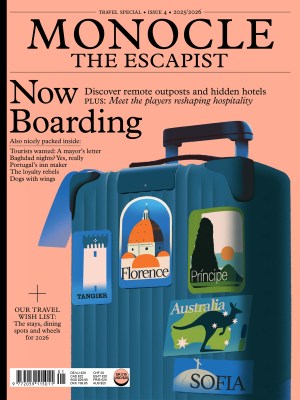Behind the scenes at Salone del Mobile’s unofficial watering hole: Bar Basso
In the decades-long reign of the industry fair, Bar Basso has been the place where the design world gets drunk. Here’s how it became Milan’s centre of gravity.
In its decades-long reign as the Salone del Mobile’s unofficial watering hole, Bar Basso has been where the design world gets drunk. Opened in 1933, it has been managed since 1967 by the Stocchetto family, who introduced Milan to cocktail hour. Its owner, Maurizio Stocchetto, can often be found at the bar, cheerfully recounting the area’s history. Bar Basso is a neighbourhood institution but, for a week in April, it also becomes the go-to social hub for an international set of designers. Here’s how this bar on Via Plinio became Milan’s centre of gravity during Design Week.

1960s:
Bar Basso passed from its founder, Giuseppe Basso, to bartenders Mirko Stocchetto and Renato Hausammann in 1967. Originally from Venice, the duo had cut their teeth behind the bar of Hotel de la Poste in Cortina and were intent on introducing cocktail culture to Milan.
1970s:
The bar has always adhered to old-school bartending methods: drinks are measured out by eye. While mixing a negroni in the late 1970s, Mirko poured in prosecco instead of gin. Thus the negroni sbagliato (“wrong negroni”) was born. Mirko also designed a supersized goblet for the cocktail, the 33cm-tall bicchierone. It was later licensed for production by Germany’s WMF.
1990s:
When Jasper Morrison and James Irvine started designing furniture for Cappellini, the two designers often stayed at Irvine’s flat in Milan and drove to and from the factory in Brianza. “On the way there, we would stop for coffee at Bar Basso; on the way back, we’d stop for an aperitivo,” says Morrison. They befriended Mirko’s son Maurizio, who allowed them to organise parties there during Salone. When Bar Basso acquired a late licence, these became open to everyone. A turning point was when the friends started issuing drink tokens as invitations. “They were popular as you could hand them over to the barman without having to queue to pay,” says Morrison.

2010s:
In partnership with Toiletpaper magazine, artist Maurizio Cattelan threw a party at an unglamorous, Chinese-owned bar across the roundabout from Bar Basso, dubbing it Lo Sbagliato. Today it’s known as Caffé degli Artisti but Cattelan’s art works are still above the bar. Bar Basso, meanwhile, received a touch-up in 2016 by Valentina Ciuffi, who had just started her creative agency Studio Vedèt (and now runs Milan Design Week showcase Alcova). “I lived down the street and frequented the bar, and I had the idea that I’d make a website for it,” says Ciuffi. “Maurizio was sceptical of anything digital. It took one, two, maybe three aperitivos for him to agree.” On barbasso.com, Studio Vedèt has organised exhibitions dedicated to the venue’s regulars, cocktails, staff and eclectic signage.
2020s:
The unofficial house bar of the Salone del Mobile has now become a brand in itself, hosting Design Week events. In 2022, Bar Basso teamed up with Berlin-based lifestyle brand Highsnobiety on a line of merchandise and the bar has even had a pop-up in Berlin. Bar Basso itself, however, remains happily frozen in time, with its walnut panelling and chandeliers unchanged since the 1960s. “It makes you reflect on our profession,” says regular Marcel Wanders. “Designers talk about changing everything but, at the end of the day, we want to sit down at a place that hasn’t changed in 80 years.”


